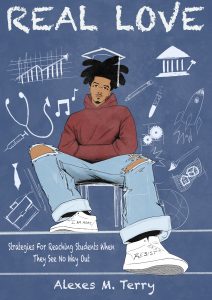Drake, Tupac, and Bey. Denzel, Voila, and Michael B. These are the stars that students in the inner city know. But so are Billie and Ed, Emma and Hugh. Oh, and all the dudes named Chris. And if you are, like I was, a teacher in and among mostly Black students, it is essential that you understand this.
I am White. And for the bulk of my classroom days, my students were generally not. There is a growing push across the nation to increase the staff reflection of the student body in schools, which is difficult since teachers are still predominantly White and female. I am not here to discuss whether it is inherently right or wrong to want students to be taught by people who look like them and that are from backgrounds similar to their own. For now, though, in accepting the near-certainty that teacher demographics often diverge from those of the students in their school, it is imperative that White teachers have the correct mindset (notice I did not say technique or strategy) so their effectiveness is not hindered by differences in culture, background, and experiences.
Over the course of about a decade, I worked at a predominantly Black high school while living in a nearby predominantly White suburb. Regularly, when I would meet someone in town and tell them what I did, I would hear responses to the effect of “oh, is it so rough there.” Now, underneath the clear racism when these White folks would generalize what were in their mind hypothetical “rough” students with phrases like “those kids,” “they,” and “them,” there is a profound insight. Even non-educators, many of whom had not stepped into a classroom since the days of their own schooling, had an understanding that kids from different backgrounds and of different races and ethnicities are just that: different. Not different in a bad way, or in an inferior (or superior) way, but different in the sense that everyone is different and teachers need to take into account student’s differences to teach them effectively.
…And yet, one of the worst things a teacher can do, and one that is not entirely uncommon, is to ignore the culture of their students. The principal I currently serve likes to quote George Evans in saying “everyone can learn, but not on the same day or in the same way.” Educators cannot look at their classroom as a culturally monolithic group who learn the same as each other and as the students they have had in the past. But in 2020, many educators, and I dare say most, no longer make this mistake. The mistake we make now is to push a preconceived idea about what their unique culture is “supposed to be” onto our kids.
In the early years of my teaching, I would make sure to reference the latest singers, rappers, actors, and otherwise hot and trending stars. While my students may have understood the applications I was making, there was undoubtedly a patronization involved with my assuming their culture for them. Not to mention the fact that, in the same way I may move from classic rock to 80’s hip hop in the span of a drive, my assumptions sold short their experience, culture, and preferences.
“But Zach,” you say, “If you’re telling me not to ignore my students’ culture, but also not to assume what it is, what is the option?”
It’s simple, really. Just ask.
Moll et al.’s 2005 Funds of Knowledge outlined a way to connect with students who were classified for various deficit-focused qualities. The authors suggest getting to know both students and their families through making home visits. While home visits for every student may not always be an option, their research and findings still provide insight. By getting to know students and making connections, you allow students to tell you the parts of their culture, background, and experience that they want to bring to the classroom. Not only will you find out who their favorite singer or baller is, you might discover that your students have funds of knowledge about horticulture, or entrepreneurship, or who knows what else. Most importantly, you are not ignoring what makes them them, nor imposing your idea of what that should be. No, instead you are acting as a human, listening to and making connections with another human.
Historically, education has taken a banking approach, where students are thought of as containers that can be filled with chunks of information. But this idea turns unique learners into student-robots, without lived experiences that change how they receive every lesson and example. Earlier in this post, I mentioned teachers needing the right mindset, not strategy. While differentiation, classroom management, and leveled texts are fine and useful, I think it is most important that an educator adopts a more Freireian mindset, seeing students and teachers as intertwined in the ongoing human process of learning. And part of that process is the teacher finding out about their students.
Pushing our assumed ideas of other people and groups is not a unique problem, but it often manifests in a unique way between White teachers and Black students, due to the historical power structure of races and the typical power structure of a teacher and their class. When a White teacher imposes their ideation of their Black students’ culture, background, and experience onto them, even when that ideation is close to accurate, there is a regression to oppression along with a centering of Whiteness that educators need to avoid. By allowing students to bring their culture, background, and experience into the classroom themselves, teachers can instead empower their students to be an active part of their learning process. And more practically, instead of sounding like a White guy trying to seem hip (a novelty which may be funny at first, will eventually lose its luster), you become a human caring about other humans, and using what you know about students to help them learn.
Authors like Emdin and Terry do fantastic jobs helping educators (especially White ones) understanding some big picture ideas about what it means to work with Black students. But teachers need to supplement that big picture with details about their specific students. And there is a wonderful side effect – or maybe this is the main effect – of having your students bring their culture, background, and experience into the classroom themselves. Rather than seeing your students as tangible expressions of a perceived common culture, you get to see your students as humans, and see them express their unique culture.
Not every Black person has the same culture, background, and experience, but every person has A culture, background, and experience. Encourage students to bring them into the classroom. You might be amazed at the learning that will happen.
Zach Urquhart is a Curriculum Specialist and Instructional Coach in Midlothian, Texas. He has published articles in various local magazines and newspapers, poetry on visualverse.org and in an upcoming anthology, and is working on several manuscripts for literary journals. He is a doctoral student in the Language, Diversity, and Literacy Studies program at Texas Tech University, where he focuses on diverse literature informing privilege and Whiteness. His kids are great, and his wife is the best.
Zach Urquhart
@zurquhart



